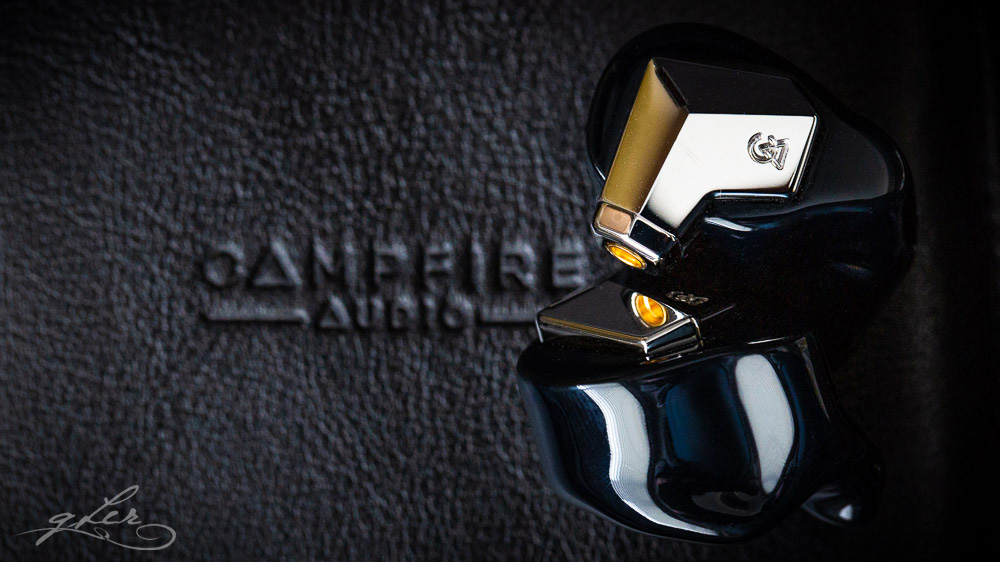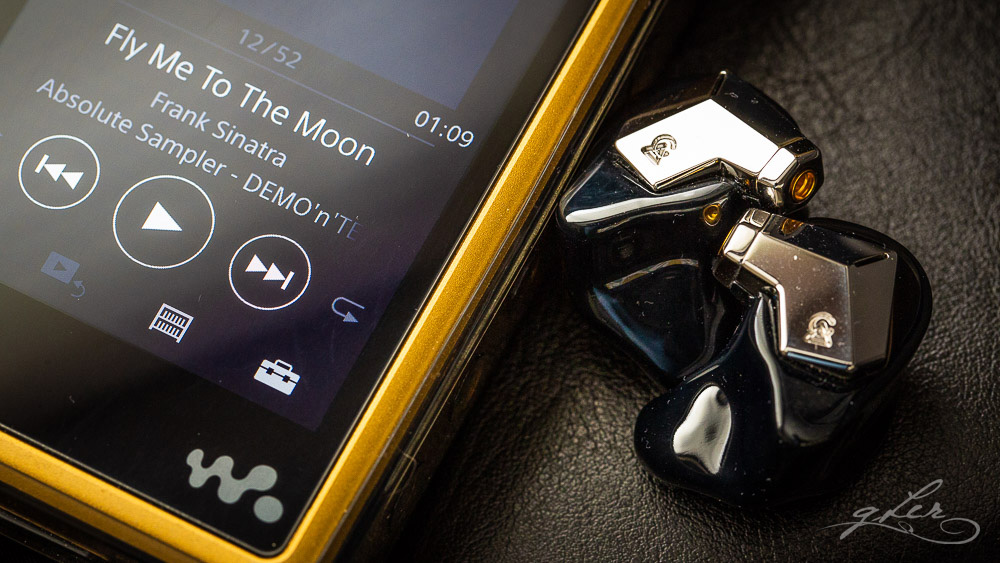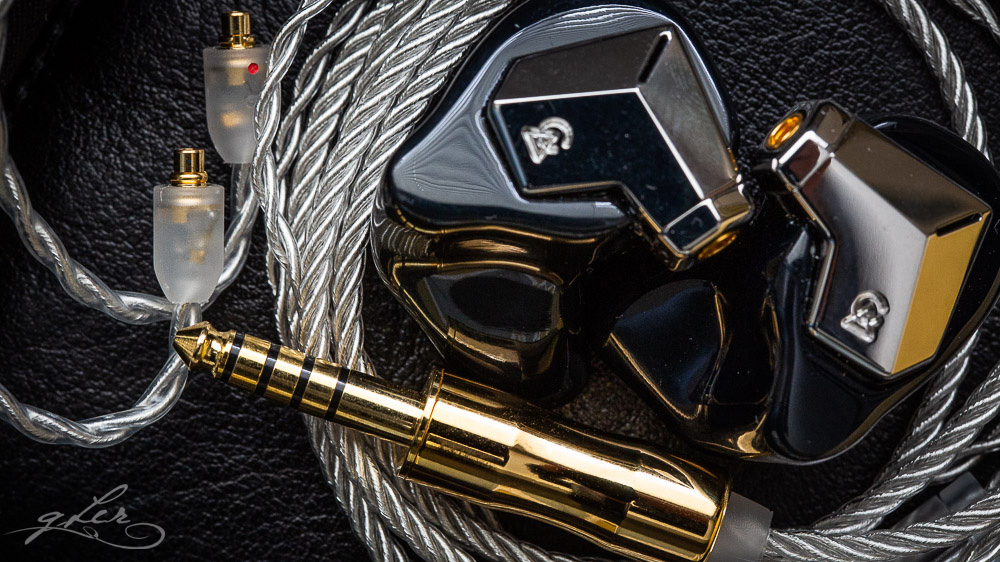Technicalities
As much as I enjoy Supermoon’s sometimes quirky but always engaging tonality, the wow factor has to be its technical ability. Supermoon’s technicalities are not just excellent, they’re supreme. It’s technical acuity is not one-dimensional either, and it excels in all but one measure, which I’ll get to later.
Stage size is wide and very deep by any standard. Supermoon can cast the tiniest notes about as far wide as I’ve heard them, maybe just shy of Traillii and 64 Audio’s Tia Fourte. Listen to Bjork’s Hunter and you’ll hear details swirling in and around your head and then, just as suddenly, jumping to the extremes. It’s an out-of-head experience I really enjoy, and somewhat of a rarity in the IEM world.
Stage depth is where I feel Supermoon takes it up a notch. It has this ability to put different sounds closer or further away on the stage, giving it a great sense of instrument and vocal separation and an almost onion-like sense of layering. Audiomachine’s Ashes of Time is a bold, boisterous track that builds up slowly, adding different orchestral elements as it progresses. You can almost peel away the layers as the track evolves, until all the elements fuse together at the crescendo.
Supermoon’s stage dimensions give it a lifelike, sometimes larger-than-life sound, creating a near-holographic soundscape you can walk through, as if you were on stage with the band or right inside the song. In Ethel Cain’s heart-breaking A House In Nebraska, the echoes in her voice show off the true extent of the stage Supermoon creates, as do the heavy piano strikes and sustained decay, as if she’s performing in a large abandoned Church. As the first drum strike hits (2:28), the feeling of immensity of space is palpable.
Imaging and separation are both of the highest calibre, the latter even more so than the former. It’s almost too easy to picture Tool’s lead vocal in Fear Inoculum at the dead centre of a spherical stage, because it’s readily apparent where each of the instruments and backing vocalists are placed around him.
Daft Punk’s Contact is another good test for how composed an IEM remains when the going gets wild, and much of this comes down to how well it can separate all the wiry, glitchy effects and drumbeats as the track reaches its epic climax. Supermoon takes the mayhem in its stride, and I can follow any of the many instruments and effects without much trouble, even at higher volume.
Resolution and clarity, as I’ve hinted before, are really what separates Supermoon from some of its highest profile competitors. This IEM is a sonic microscope, revealing even the smallest detail in a track without much fuss. It doesn’t always do this with the deftest touch, however, so the shortcomings of compression artefacts, cheap samples or sub-par recordings in poor quality tracks are often brutally exposed.
Give it the right material, however, and the results are revelatory. The intro to Pink Floyd’s On The Run, from Dark Side of the Moon, features an airport announcer on the PA in the background of the track, with running footstep effects panning left to right, followed by louder drone like synth effects, and all the while the announcer continues speaking. Supermoon is the first and only IEM I’ve ever used that lets me hear the announcer throughout the sequence, with its incredibly resolving but also clean and layered sound.
Where Supermoon doesn’t shine quite as brightly, if you’ll excuse the pun, is dynamic contrast. It suffers from what I believe to be a common planar magnetic trait in that the difference between the softest and loudest sounds in a track are not articulated quite as well as they are with some other driver types (notably dynamic drivers, but also balanced armatures). This means songs like Coldplay’s Fix You, that start slow and soft and build up to a powerful crescendo, sometimes come off as less emotive and powerful because the ‘big reveal’ isn’t as big as it could be.
This is not a problem with much of my music, and to be honest, even though I notice it in tracks like the one above, or similarly powerful tracks like Hans Zimmer’s Mountains, there’s still more than enough power in the delivery to satisfy, and it doesn’t take away from any of the many other superior traits this IEM outs on the table. Still, if you listen to music with wild dynamic swings, this could be an issue for you, even if it’s not for me.

Select pairings and comparisons
In the past month, one thing that’s become abundantly clear to me about this IEM is its chameleon-like personality. Supermoon, more than most other IEMs I’ve used, is so sensitive to different sources and cables, that it can sometimes sound like a completely different IEM when switching from one to another.
This can be a pro or a con, depending on what you want from an IEM. If all you want is an IEM that sounds good with anything, off any source, and doesn’t care if you hook it up with copper, silver, or unicorn hair, then Supermoon will likely frustrate you. That said, if you’re not sold on some of Supermoon’s tonal quirks – it’s leaner midrange, for example – then being able to meaningfully tweak the sound to your liking is a bonus.
Below are some source and cable pairings I’ve personally tried with Supermoon. My preference is for a warmer, fuller, more romantic sound, something that Supermoon seems reluctant to offer out the box, and so finding sources and cables that lean warmer and more ‘analogue’ helped me get about as close as possible to this ideal. Your preference might be for something even brighter and more analytical, and you can do that too by finding the right combination of pairings.
Sources
HiBy RS6. This is HiBy’s midrange R2R DAP, and is tuned with a warm-leaning analogue tonality and a particular focus on emotive, forward vocals. To me this is one of the better pairings for Supermoon if you want to fill out the midrange without sacrificing much by way of stage or resolution.
It has abundant power, so I’m rarely turning the volume dial past halfway on low gain, and its bass and treble emphasis works well with Supermoon’s tuning to my ears. I like how guttural and big the bass can sound with this player, and the treble, though slightly rolled off, tempers some of Supermoon’s spiky edges, giving me the smooth, silky treble response I described above.
HiBy RS2. I wasn’t a fan of this pairing initially, and said as much in my recent review of this entry-level R2R DAP. Since then, however, I’ve found more things to like here. RS2 is not as refined as RS6, nor does it resolve to the same level. But it does add some punch compared to RS6’s more restrained sound, and while it exposes some of Supermoon’s midrange issues – particularly with female vocals – it gives it more dynamic verve with EDM and similarly lively music. Still not my ideal pairing, but I can see why it would be for some.
Sony WM1Z. If you’re still under the illusion that Supermoon needs watts of power to shine, plug it into Sony’s 65mW DAP on lower gain and come back to me. There’s something about the ‘Sony sound’ that gets me every time, and effortless combination of superb resolution, staging and a smooth, lush, intoxicating tonality that somehow still manages to sound utterly natural.
Supermoon feeds off these traits just as I expected it would. It doesn’t come off nearly as creamy as it does with RS6, but what it loses in romance it gains in authority and resolve. Everything is an uptick here: more resolution, more speed, better separation, imaging and layering, bigger stage. Bass doesn’t slam quite like it does with the HiBys, but it gains more texture and detail. Midrange glare is all but eliminated with the Walkman too, and I’m yet to hear a track with errant treble using this combination.
This is my favourite pairing for critical listening, even though I find RS6 more inviting on occasion.

Cables
Campfire Audio Super Litz. This is the ‘stock’ cable I received with my Supermoon, although it’s not Supermoon’s official stock cable (that honour goes to Campfire’s less expensive Smoky Litz). As the baseline cable I used for the majority of this review, however, everything you’ve read to this point is based on what this cable offers. At $199 ($119 on special), the cable is light, supple, and very well made, with zero microphonics. I’d have no hesitation choosing this cable as a replacement for the stock cable, although in fairness I can’t comment on any sound differences between the two.
Effect Audio Cleo II. This is most likely the cable I’ll switch to once this review is done. I’ve only spent a limited amount of time with it so far, but from what I’ve heard, Cleo II smooths out any remaining creases in Supermoon’s midrange, while giving the treble a thicker, more analogue feel – unusual for a silver cable. It also bumps the resolution up a notch, making smaller details and inflections in the middle of busy tracks easier to notice, and gives midbass a tiny lift in the process. As a high-end cable, Cleo II is superbly well built, is soft and supple, with excellent ergonomics befitting its lofty price. If you want to treat your Supermoon to a seductively luxurious cable, give Cleo II a try.

Compared to…
Sennheiser IE 600 ($699). It’s probably fairer to pitch Supermoon against Sennheiser’s $1500 IE 900 flagship from a price point perspective, but since I currently only have its sibling with me, it’ll have to do. Aesthetically I really like the IE 600, which mirrors its flagship brother’s super small size, supreme build quality and comfort. If Supermoon wasn’t a CIEM, chances are IE 600 would be more comfortable, but nothing quite compares to a custom once you’ve tried it.
Tonally IE 600 ‘correct’, to the point where some might find it unengaging or boring, and that’s very much the case when I compare it to Supermoon. While I appreciate the safety in IE 600’s tuning, it doesn’t grab me quite like Supermoon’s. IE 600 has a touch more warmth and that single dynamic driver naturalness to it, but Supermoon isn’t far off.
Technically, though, the two couldn’t be further apart. Supermoon is significantly more resolving, to the point that you’ll be surprised just how much information you’re not hearing with IE 600 when switching between the two. Supermoon’s stage is also much larger in all dimensions, IE 600’s otherwise decent stage coming off as flat and intimate by comparison. Whereas I’d easily recommend IE 600 as an every day carry IEM, Supermoon is a more serious, refined, exciting and superior IEM all round.
Sony IER-Z1R ($1800). Sony’s flagship is getting a bit long in the tooth now, but still holds its own against the very best in the business. It also happens to be my all-time favourite IEM. From a fit perspective, Supermoon makes quick work of Z1R’s unconventional ergonomics. The Sony fits me just fine, but the same can’t be said for many who have tried and failed, often repeatedly. Build quality, however, goes to Sony, as few IEMs come close to rivalling its expert craftmanship and drop-dead good looks.
Tonally I hear Z1R to be warmer, lusher and also slightly edgier than Supermoon, especially in the lower treble. Its bass and treble are of such high quality, however, that even Supermoon’s pristine presentations struggles to match them. Sony’s big dynamic driver bass is fast, but not nearly as fast as Supermoon’s planar, although Z1R’s timbre is a shade more natural. I also prefer Sony’s vocal timbre, and although treble is more emphasised, it’s a dead heat from a tuning perspective.
Technically the Sony is excellent, one of the best when it comes to its sheer depth of stage and powerful dynamics, but Supermoon out-resolves it, has a wider stage, and also better imaging, layering and separation. What the Sony has over Supermoon in return is a unique presentation that puts vocals dead centre with instruments and effects all around you, sometimes even further beyond your head than Supermoon can manage. It’s also better suited to more dynamic music, and any track with a subwoofer is simply made for the Sony.
I find Supermoon and Z1R complementary. They’re both operating at a high technical level, and trade blows with each other tonally, but each brings its own version of events to every track. Z1R gives you that in-the-room feel and a wonderful sense of space, while Supermoon creates its own space and spreads the sonic elements all around you. With Z1R you’re fixed in front of the singer, far removed from the band. With Supermoon you’re on stage but free to walk around at will. Take your pick as to which you prefer, but in my opinion you can easily live with both and switch them up as your mood takes you.

Continue to closing thoughts…




One Response
Quite superb as always.